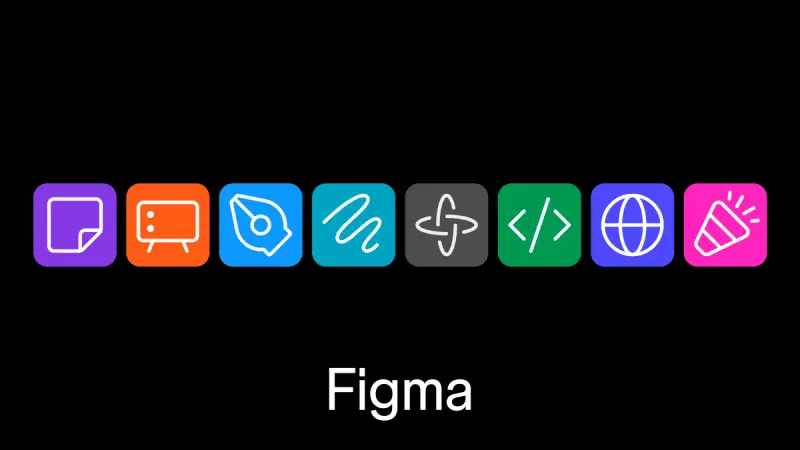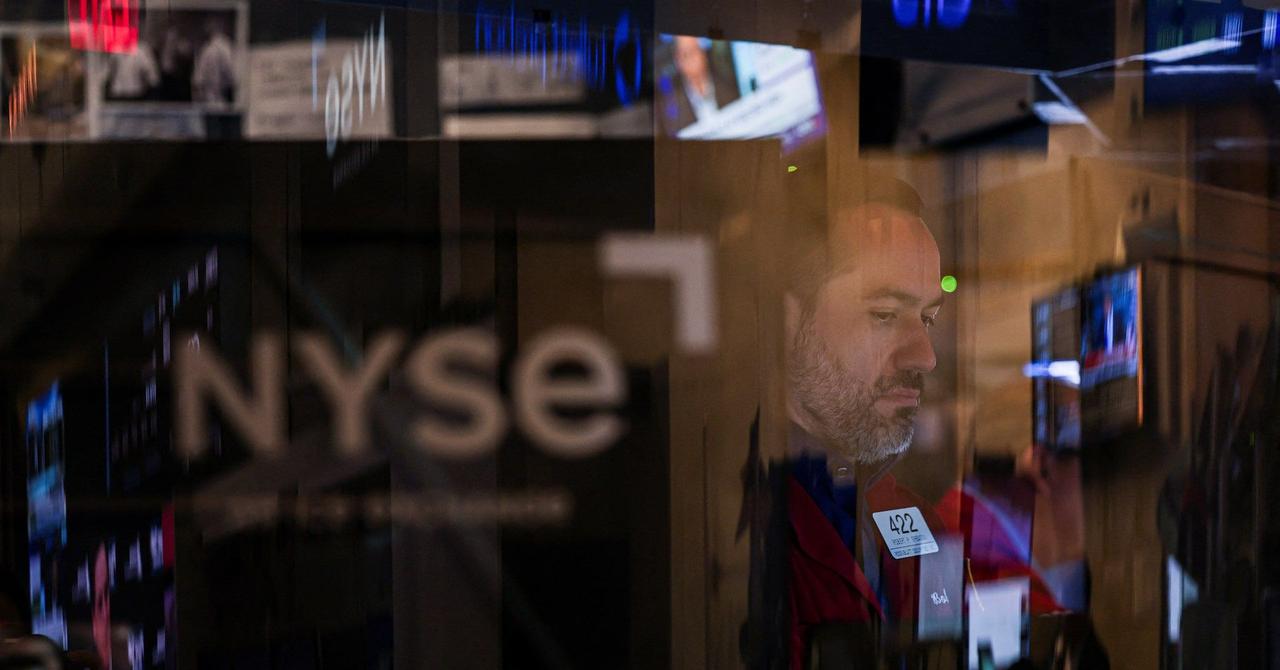Figma's First Post-IPO Earnings Report Disappoints Investors Despite Revenue Growth
5 Sources
5 Sources
[1]
Figma's first earnings report after stellar debut underwhelms investors
Sept 3 (Reuters) - Figma (FIG.N), opens new tab posted a slight beat on second-quarter profit and revenue in its first financial report as a public company on Wednesday, but fell short of the lofty expectations set by AI and tech investors, sending its shares down 13% after the bell. The company delivered a blowout debut in July as investors rallied behind its new product lineup, revenue growth and potential to capture a significant share of the design software market. Figma's strategy to incorporate every aspect of product development -- from ideation to coding and shipping -- into its software has made it an attractive option for companies such as Netflix (NFLX.O), opens new tab and freelancers to create their own platforms. "The stock had been priced for perfection at over two hundred times expected earnings, which means even solid numbers cannot carry that many layers without some flattening," said Michael Ashley Schulman, partner and CIO at Running Point Capital Advisors. "Figma's high valuation was built on story and future potential and management's outlook disappointed," he said. Shares of the company, which gained 250% on the first day of trading, were down more than 40% since the debut. Figma's second-quarter revenue jumped 41% to $249.6 million. Analysts on average estimated $248.8 million, according to data compiled by LSEG. Its adjusted earnings per share of 9 cents also edged passed the estimate of 8 cents. Figma has been aggressively rolling out new features to attract and retain subscribers. This year it launched four products, including Figma Make -- an AI-powered product that turns a written prompt into a functional prototype. The company expects fiscal 2025 revenue to be between $1.02 billion and $1.03 billion, while analysts estimate $1.01 billion. Separately, as its stock price has met certain conditions relating to its initial public offering, the lock-up period for certain employees will end later this week, while senior executives will have to hold their shares till later in the year. Reporting by Zaheer Kachwala in Bengaluru; Editing by Shilpi Majumdar Our Standards: The Thomson Reuters Trust Principles., opens new tab
[2]
Figma's stock plunges after company's first earnings report since IPO
Dylan Field, co-founder and CEO of Figma, center, appears on the floor of the New York Stock Exchange in New York on July 31, 2025. Figma Inc. shares surged as much as 229% after the design software maker and some of its shareholders raised $1.2 billion in an IPO, with the trading valuing the company far above the $20 billion mark it would have reached in a now-scrapped merger with Adobe Inc. Figma shares plunged 13% in extended trading on Wednesday after the design software company reported results for the first time since its IPO in July. Here's how the company did in comparison with LSEG consensus: Revenue increased 41% year over year in the second quarter from a year earlier, Figma said in a statement. The company provided a preliminary estimate of $247 million to $250 million in a July regulatory filing. CNBC isn't including a profit estimate because it's Figma's first earnings report. Net income totaled $846,000, compared with a loss of $827.9 million in the second quarter of 2024. The company's adjusted operating income came to $11.5 million, after Figma provided a prior estimate of $9 million to $12 million. For the third quarter, Figma forecast revenue of between $263 million and $265 million, which would represent about 33% growth at the middle of the range. The LSEG consensus was $256.8 million. The company sees between $88 million and $98 million in adjusted operating income for the full year and a little over $1.02 billion in revenue. The revenue range implies about 37% growth and is above the $1.01 billion LSEG consensus. In the second quarter, Figma announced Figma Make, which uses artificial intelligence to compose app and website designs based on a user's descriptions, and Figma Sites, which turns designs into working websites. The company also acquired vector graphics startup Modyfi and content management system startup Payload. A number of software vendors have faced pressure this year due to concerns surrounding AI and whether it will displace business. Figma co-founder and CEO Dylan Field said he's not seeing that play out internally and that, if anything, the role of designers will only become more critical. "I think that the more that software becomes easier to build with AI, the more that people are going to see that that human touch is needed," Field said. He acknowledged that Figma has been adopting so-called vibe-coding tools for AI-driven software development. Figma reported a 129% net retention rate, a reflection of expansion with existing customers. The figure was down from 132% in the first quarter. Following its IPO, Figma expects a share sale lockup to expire for 25% some employees' stock after market close on Sept. 4. Investors holding just over half of Figma's outstanding Class A stock have agreed to an extended lock-up that will expire in August 2026 for about 35% of their shares. Field said he wanted to provide clarity for investors. "That's something that I think is valuable information," he said. On Wednesday the company's stock closed at $68.13. The company priced shares in its IPO at $33, and saw the stock pop to $115.50 in its debut. Executives will discuss the second-quarter results with analysts on a conference call starting at 5 p.m. ET.
[3]
Figma is getting crushed in its post-IPO earnings debut; CEO Dylan Field is focused on AI's long term power to 'raise the ceiling'
Five weeks after going public with a stunning 250% first-day pop, Figma is coming back down to Earth. Shares of design software company Figma plunged 14% in extended trading, as investors took a dim view of Figma's first quarter earnings report. Figma CEO Dylan Field, who cofounded the company in 2012 and watched its $20 billion acquisition by Adobe fall apart in 2023, isn't one to get caught up in the negative. "We're at the very start of what I hope is a long term relationship together," a confident Field told listeners as he kicked off the earnings call, taking advantage of the opportunity to demonstrate Figma's presentation technology. Prior to the call, Field spoke to Fortune and shared his thoughts on one of the most important trends affecting his business: AI. "No one knows whether we're going to look back in five years at everything that's happening right now in AI and say, 'Oh my God, those were the bubbliest of times," Field said. "Or: 'Wow, we totally underestimated the effect it would have on society.' But for Figma, what I think will be true in five years is that we're always trying to make it so you can go as fast as possible from idea to production. And I think with AI, you can really accelerate that." AI is at the center of the private and public markets, and is widely viewed as a key tailwind -- and risk factor -- for Figma. In its fiscal second quarter, Figma grew revenue a healthy 41% year-over-year to $249.6 million, roughly in-line with analyst expectations. Figma reported $28.2 million in net income, or break-even on a per share basis. Field believes one of the key intersections between AI and design is that AI tools will help broaden access, letting more people become designers. Figma added four new AI-native tools to its platform this quarter and told investors on the call to expect significant investments in AI going forward. "We want to lower the floor, but raise the ceiling -- make it so more people can participate in the design process, while also enabling professionals to do even more with AI," Field told Fortune, reiterating a company mantra of "design is the differentiator." The "design as differentiator" thesis dates back to Figma's early days. When Field was an intern at Flipboard in 2012, he noticed that, even then, companies were hiring more designers. And as mobile technology and consumer expectations evolved, he theorized design was becoming a critical differentiator, transitioning from a skill to a critical business advantage. That's only more true today, he said, adding that "there's a kind of talent war happening for design right now that's being talked about in conversation a lot online." Ultimately, Field said, Figma's approach to AI is about riding the wave. "Our philosophy is that as the models get better, we get better," he said. "That's always the test I have strategically for us."
[4]
Figma Reports 41% Revenue Growth | The Motley Fool
Figma (FIG 0.55%) reported Q2 2025 earnings on July 28, 2025, delivering $250 million in quarterly revenue (41% year-over-year revenue growth), a 5% non-GAAP operating margin, and a 24% adjusted free cash flow margin. Management announced multi-product expansion, new product launches, key M&A activity, and margin pressure from increased AI investment, while providing initial public guidance for Q3 and FY2025 operating results and revenue, setting the tone for evolving reporting methodology and near-term reinvestment. This summary analyzes strategic expansion impacts, AI-led investment trade-offs, and evolving business model signals from Figma's inaugural earnings call as a public company. Figma doubled its product portfolio at the Q2 Config conference, introducing Figma Make, Draw, Sites, and Buzz, while also making two acquisitions (Modify and Payload) to enhance product capabilities. These moves helped support 41% year-over-year revenue growth and expand cross-product adoption, as more than 80% of customers used two or more products and two-thirds use three or more. "At Config, we launched four new products, doubling our product offering. These products are Figma Make, Figma Draw, Figma Sites, and Figma Buzz. We also launched our dev mode MCP server, which speeds up developer workflows by bringing context from Figma Design into any surface that consumes MCP, for example, IDs like Versus Code and Cursor. In Q2, we also made two exciting acquisitions, a company called Modify, support our work around visual expression, and Payload, an open-source company with a strong developer community that offers a leading headless content management system and application framework." -- Dylan Field, Co-Founder and Chief Executive Officer This aggressive expansion positions Figma as a unified platform for the broader product development lifecycle, enhancing customer lock-in and expanding the addressable market beyond core design users. Gross margin (non-GAAP) declined to 90% and management forecasted further near-term margin pressure due to increased AI model (inference) infrastructure spending to support the rollout of Figma Make and future AI features. The company maintained a $1.6 billion cash balance to fund this investment, signaled willingness to deepen reinvestment at the cost of shorter-term profitability, and explicitly guided for FY2025 revenue of $1.021 billion to $1.025 billion, representing 37% year-over-year growth at the midpoint and non-GAAP operating income of $88 million to $98 million for FY2025. "We anticipate that we will see further gross margin compression in the near term as we roll out our AI products, including FigmaMake, and recognize increases in inference spend. This is the largest driver of the quarter-over-quarter change in our gross margin. We view this as an investment in our products, our product differentiation, and meeting the evolving needs of our customers." -- Praveer Melwani, Chief Financial Officer The explicit commitment to prioritize sustained innovation over near-term margins signals a clear, long-term value creation strategy and demonstrates management's discipline in capital deployment and market positioning. With new pricing and packaging rolled out in March 2025, Figma migrated all monthly customers and began updating annual contracts at renewal, aiming to increase ARPU through multiproduct seats and admin control improvements; this transition is expected to drive a mid-to-high single-digit percentage growth tailwind for the year. Net dollar retention for accounts spending over $10,000 in annual recurring revenue (ARR) reached 129%, underpinned by seat expansion and multiproduct adoption. "We introduced the concept of a multiproduct seat giving more functionality to each user. Second, we changed the admin upgrade experience, effectively empowering our admins to have explicit approval authority prior to a new user being provisioned. And lastly, we increased the price of our full user seat type." -- Praveer Melwani, Chief Financial Officer Effective execution on packaging and seat expansion initiatives is building durable, high-quality recurring revenue streams that support Figma's move upmarket and provide leverage as adoption of new tools matures. Management guided Q3 2025 revenue to $263 million to $265 million and full-year FY2025 revenue to $1.021 billion to $1.025 billion, implying 37% year-over-year growth at the midpoint, with full-year non-GAAP operating income guidance of $88 million to $98 million. The company plans to evolve its monetization models, adding usage-based pricing alongside seat-based subscriptions, and expects continued pressure on non-GAAP gross margin as AI products scale. No additional segment-level or quantitative product adoption guidance was provided, and management explicitly reserved the right to update metric disclosures in future periods as its business model and revenue mix evolve.
[5]
Figma Revenue Jumps 41% in Fiscal Q2
Figma (FIG -18.16%), a provider of cloud-based collaborative design software, released its Q2 FY2025 earnings on Sept. 3, 2025. The most significant news was a 41% year-over-year increase in Q2 revenue, reaching $249.6 million. The company posted positive operating and net profits on both a GAAP and non-GAAP basis. Results slightly outpaced reported analyst expectations, especially given elevated spending on new products and the Config user conference. The company delivered an overall solid quarter, with strong growth in customer engagement and retention, but also signaled slower top-line growth for the coming quarters. Source: Figma. Business Overview and Key Success Factors Figma offers software tools that enable design teams to create, prototype, and collaborate on user interfaces directly in the browser. Its core products include Figma Design (vector-based interface design), FigJam (digital whiteboarding), and Figma Make (AI-powered prototyping). The company's focus is on rapid product innovation and deep integration with existing workflows. Recent priorities included artificial intelligence enhancements, expanding the developer toolset, and increasing the number of features that support content and code delivery. Key success factors for Figma include keeping its product suite ahead of competitors, driving up cross-product usage, and growing its base of high-value enterprise customers generating more than $10,000 or $100,000 in annualized revenue (as measured by ARR as of Q2 2025). Quarter in Review: Product Innovation and Business Momentum During the quarter, Figma launched four new tools: Figma Make (AI-powered prototyping), Figma Draw (tools for drawing and visual expression), Figma Sites (solution to convert designs into live websites), and Figma Buzz (tools for creating marketing assets). The company also debuted its Dev Mode MCP server, which streamlines the process of turning designs into usable code using large language models (LLMs). These expansions reinforced Figma's strategy to extend beyond basic design and support the entire workflow from initial sketch to final product delivery. Figma completed two acquisitions in the quarter: Modyfi, which adds advanced animation and motion design features, and Payload, a content management system (CMS) focused on developers. Both acquisitions strengthen the platform's capabilities for integrating animation and content management into product development workflows. Figma reported 11,906 customers with annual recurring revenue (ARR) above $10,000 as of Q2 2025 and 1,119 customers with ARR above $100,000 as of Q2 2025. Over 80% of customers used at least two products in Q2 2025, About two-thirds of customers used three or more products during the quarter ended June 30, 2025. Figma maintained positive operating margins, even as it increased spending for its major Config user conference and accelerated hiring tied to new product launches. The company posted non-GAAP operating income of $11.5 million (up from $4.9 million) in Q2 and non-GAAP net income of $19.8 million. Adjusted Free Cash Flow rose sharply, reaching $60.6 million in Q2 2025, up from $6.1 million in Q2 2024. Cash, cash equivalents, and marketable securities totaled $1.6 billion as of June 30, 2025. Outlook and What to Watch Management issued GAAP revenue guidance for Q3 2025 of $263 million to $265 million, representing approximately 33% year-over-year growth at the midpoint. For FY2025, Figma projects GAAP revenue between $1.021 billion and $1.025 billion, signaling ongoing growth but at a slower rate than previous quarters. Non-GAAP operating income is expected to be between $88 million and $98 million for FY2025. There was no explicit guidance on net income margins or free cash flow. Figma does not currently pay a dividend. A significant amount of employee and service provider shares will be released from lock-up beginning September 5, 2025, allowing up to 25% of eligible shares to enter the market after Q2 2025 earnings, with further unlocks scheduled through August 2026. Investors should also keep an eye on the impact of share unlocks on trading activity and float. Revenue and net income presented using U.S. generally accepted accounting principles (GAAP) unless otherwise noted.
Share
Share
Copy Link
Figma's Q2 2025 earnings report shows 41% revenue growth, but falls short of investor expectations, leading to a 13% stock drop. The company focuses on AI integration and product expansion amid market challenges.
Figma's Q2 2025 Performance: Growth Amid High Expectations
Figma (FIG.N), the cloud-based collaborative design software provider, released its first earnings report as a public company for Q2 2025, showcasing significant growth but falling short of the lofty expectations set by investors
1
. The company reported a 41% year-over-year increase in revenue, reaching $249.6 million, slightly surpassing analyst estimates of $248.8 million1
4
.Financial Highlights and Market Response
Despite the revenue growth, Figma's stock plunged 13% in extended trading following the earnings announcement
2
. The company's adjusted earnings per share of 9 cents edged past the estimate of 8 cents1
. Figma's net income totaled $846,000, a substantial improvement from a loss of $827.9 million in Q2 20242
.The market's reaction reflects the high valuation Figma had achieved, trading at over 200 times expected earnings before the report
1
. Michael Ashley Schulman, partner and CIO at Running Point Capital Advisors, noted, "Figma's high valuation was built on story and future potential and management's outlook disappointed"1
.Product Innovation and AI Integration

Source: Fortune
During Q2, Figma significantly expanded its product portfolio, launching four new products at its Config conference:
- Figma Make: An AI-powered tool for turning written prompts into functional prototypes
1
3
. - Figma Draw: Tools for drawing and visual expression
4
. - Figma Sites: A solution to convert designs into live websites
4
. - Figma Buzz: Tools for creating marketing assets
4
.
The company also introduced Dev Mode MCP server, which streamlines the process of turning designs into usable code using large language models (LLMs)
4
.Strategic Acquisitions and Business Model Evolution
Figma completed two strategic acquisitions in Q2:
- Modyfi: Enhancing animation and motion design capabilities
4
. - Payload: A content management system focused on developers
4
.
These acquisitions aim to strengthen Figma's platform capabilities and support the entire workflow from initial sketch to final product delivery
4
.Related Stories
Customer Engagement and Retention
Figma reported strong customer engagement metrics:
- 11,906 customers with annual recurring revenue (ARR) above $10,000
5
. - 1,119 customers with ARR above $100,000
5
. - Over 80% of customers used at least two products in Q2 2025
5
. - About two-thirds of customers used three or more products
5
.
The company's net dollar retention rate for accounts spending over $10,000 in ARR reached 129%
4
.Future Outlook and Challenges

Source: CNBC
Figma provided guidance for Q3 2025, forecasting revenue between $263 million and $265 million, representing approximately 33% year-over-year growth at the midpoint
2
5
. For FY2025, the company projects GAAP revenue between $1.021 billion and $1.025 billion5
.CEO Dylan Field emphasized the company's focus on AI integration, stating, "We want to lower the floor, but raise the ceiling -- make it so more people can participate in the design process, while also enabling professionals to do even more with AI"
3
.However, the company anticipates near-term margin pressure due to increased AI model infrastructure spending to support new AI features
4
. This strategic decision signals Figma's commitment to long-term innovation over short-term profitability4
.As Figma navigates its post-IPO landscape, the company faces the challenge of meeting high investor expectations while continuing to innovate and expand its market presence in the competitive design software industry.
References
Summarized by
Navi
[4]
[5]
Related Stories
Figma's AI-Powered Growth: Design Platform Beats Expectations with 38% Revenue Jump
06 Nov 2025•Business and Economy

Figma's Blockbuster IPO Signals Tech Market Revival and AI Focus
31 Jul 2025•Business and Economy

Figma Stock Soars Following ChatGPT Integration Showcase at OpenAI's DevDay
07 Oct 2025•Technology

Recent Highlights
1
OpenAI releases GPT-5.2 AI model after code red memo signals Google Gemini 3 threat
Technology

2
Disney invests $1 billion in OpenAI, licenses 200+ characters for Sora AI video generator
Technology

3
OpenAI faces wrongful death lawsuit after ChatGPT allegedly fueled murder-suicide tragedy
Policy and Regulation




